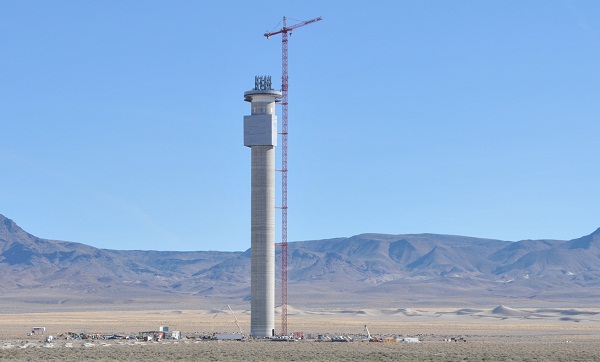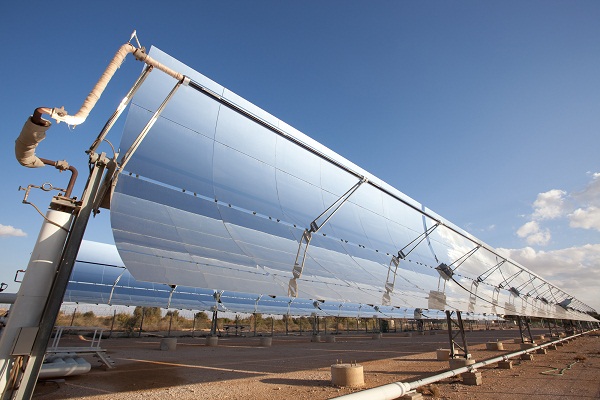Jigar Shah says concentrating solar power “is dead,” slain by ever-cheaper PV. But can storage save the industry?
The Concentrating Solar Power Alliance says so, and a fresh study from the National Renewable Energy Laboratory is bolstering the industry group’s claim.

But before we dive into the details on that, some background: Concentrating solar power uses mirrors to focus sunlight to create heat that can be used to produce electricity. CSP most often comes in the form of parabolic troughs that have a fluid-filled receiving tube running along a long row of concentrators, or in power tower configurations in which large, sun-tracking heliostats focus the energy on a receiver atop a tall tower. While the heat produced by such systems can be put to immediate use to make steam (to turn a turbine), some plants add the ability to heat molten salt, which can hold onto the heat for later use.
In some ways, it appears this technology for producing utility-scale solar is booming. When 2013 unfolds, two trough and two power-tower projects, totaling 800 megawatts of generating capacity, are expected to come online in the United States. (We also saw Abengoa recently win contracts for each type of plant in South Africa.)
But on the flip side, Siemens in October bailed on CSP and BrightSource Energy, after withdrawing its IPO bid in April, in October had power purchase agreements for just two of five projects approved by the California regulators.

Hoping to rally support, the alliance of CSP heavies points squarely and emphatically at storage as the factor that gives them an edge in a renewable energy space made ever-more competitive by the decline in subsidies.
“A robust body of research is available and demonstrates that CSP with storage provides additional economic and reliability value to utilities and grid operators when compared to other renewable investments,” Udi Helman, director of economic and pricing analysis for BrightSource Energy, said in a CSPA release. “CSP’s ability to reduce its costs through commercial deployment, coupled with its long-term economic and reliability value when compared to other renewables, helps position this technology as a key component of a low carbon energy mix.”
The NREL study, which was included in the CSPA report, simulated grid operations in two Colorado “balancing areas” – zones in which generation and demand need to be matched. According to the NREL:
The report found that CSP with a six-hour storage capacity can lower peak net loads when the sun isn’t shining, enough to add $35.80 per megawatt hour to the capacity and operational value of the utility, compared to photovoltaic (PV) solar power alone, and even higher extra value when compared to CSP without storage. The net load is the normal load minus variable renewables such as photovoltaic and wind.
The report said that level of extra value comes when renewables make up about a third of a utility’s energy mix; the value of CSP would rise as renewable penetration increases, or fall at lower levels.
The key here is storage, which gives utilities the flexibility to use the CSP power to displace more-expensive gas-fired generation as opposed to displacing cheaper coal-fired power.
“With CSP with thermal storage, you aren’t diving as deep into the generation stack, displacing cheaper and cheaper fuel,” the NREL’s Paul Denholm, who cowrote the story with Marissa Hummon, said in a statement. “You’re always displacing the highest-cost fuel.”
Of the big four U.S. CSP plants expected to begin operations in 2013, two will come with storage – Abengoa’s Solana parabolic trough plant, and SolarReserve’s Crescent Dunes power tower.